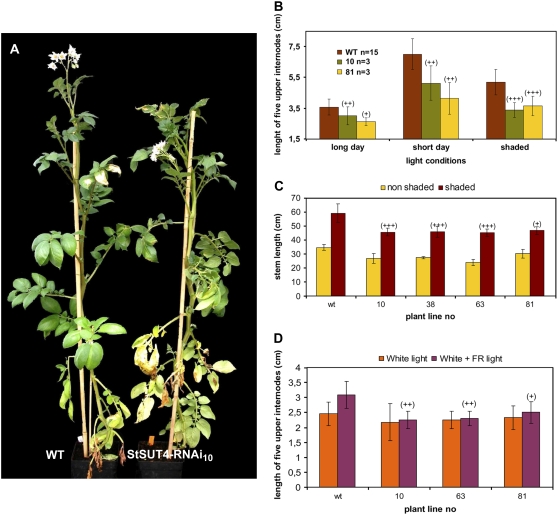Figure 8.
A, To reduce the red to far-red ratio for greenhouse-grown plants, they were planted at a density of 21 plants m−2. Wild-type plants show shade avoidance response under canopy shade, showing elongated internodes and hyponastic leaf movement to capture light under crowded conditions (left side). StSUT4-RNAi plants do not show shade avoidance under canopy shade. Neither internode elongation nor leaf angle adaptation was observed (right side). B, Internode elongation of wild-type and StSUT4-RNAi potato plants grown under LD and SD conditions or in high-density populations under LD conditions. The experiment was reproduced in the greenhouse and in the growth chamber under LD and SD conditions showing the same results in each case. The length of the five upper internodes was measured as described by Martinez-Garcia et al. (2002). C, Internode elongation of potato plants grown under canopy shade in the greenhouse. Shaded plants were grown at high plant density (21 plants m−2), whereas control plants were grown at low density (7 plants m−2). D, Internode elongation of potato plants grown under artificial light conditions in the phytochamber. Internode length was measured after 3 weeks of growth under white light or under white light with additional far-red light. sd is given.

